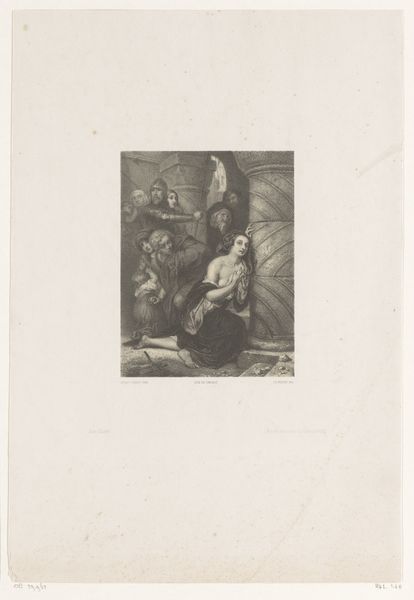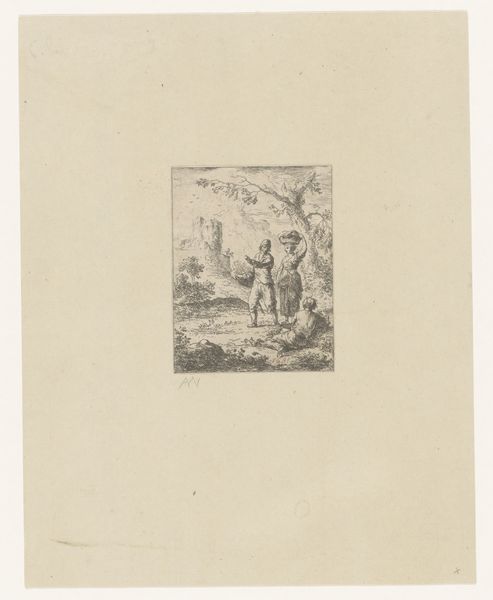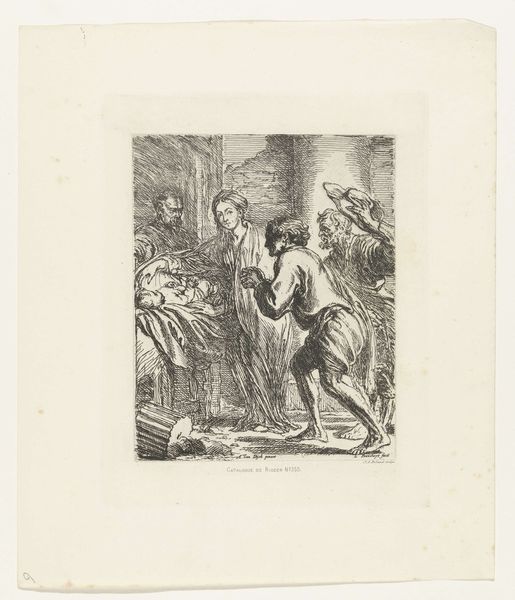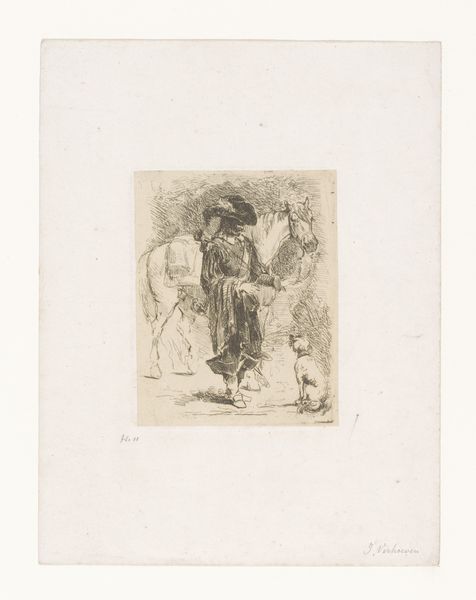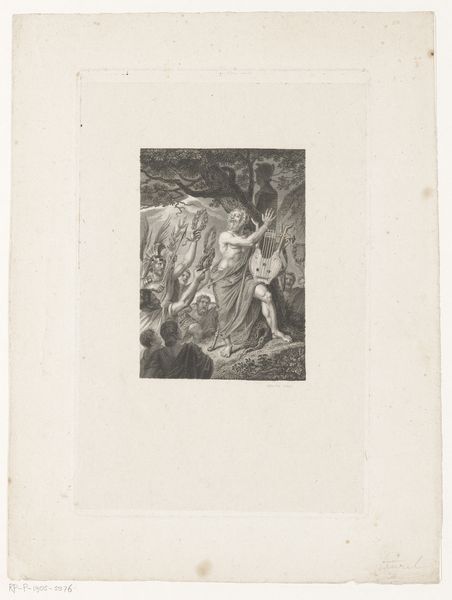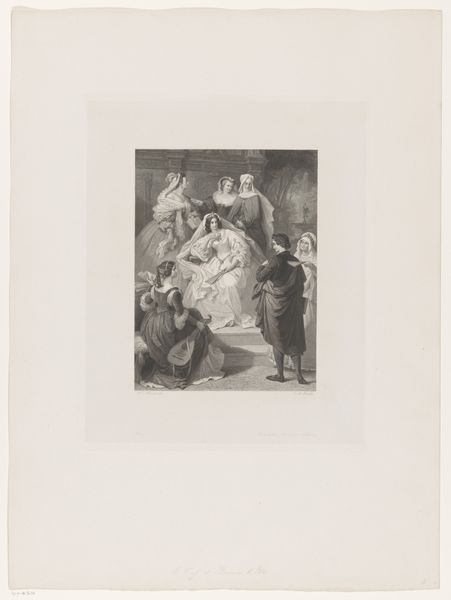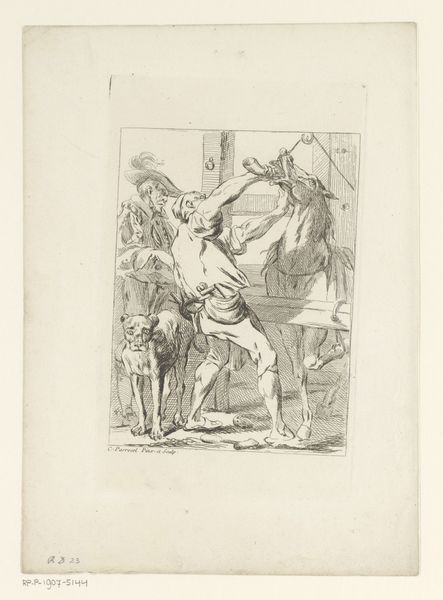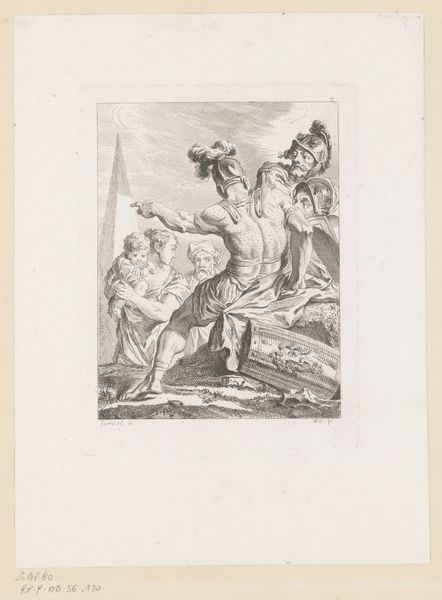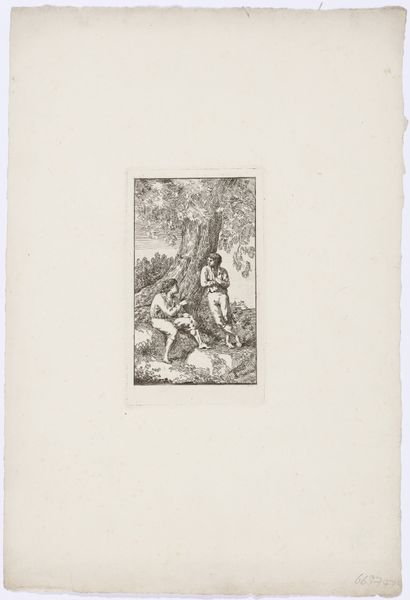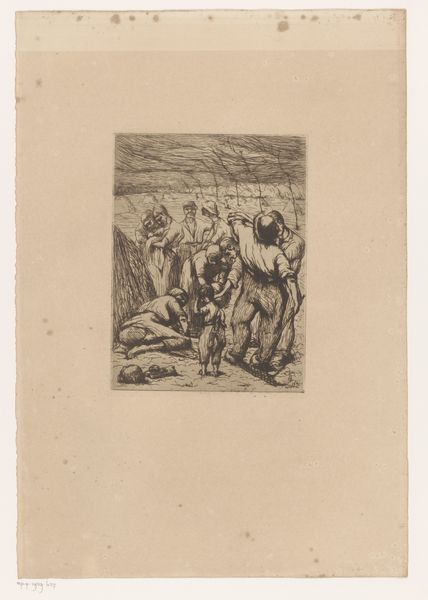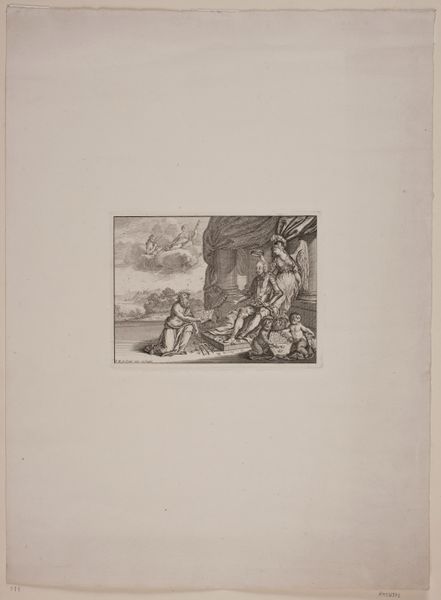
Twee mannen waarvan één wijzend staande achter twee vrouwen gezeten op de grond 1876
0:00
0:00
drawing, print, intaglio, paper, engraving
#
drawing
# print
#
intaglio
#
paper
#
genre-painting
#
history-painting
#
academic-art
#
engraving
Dimensions: height 229 mm, width 189 mm
Copyright: Rijks Museum: Open Domain
Curator: This is an engraving by Juliaan de Vriendt from 1876, titled "Two Men, One Pointing, Standing Behind Two Women Seated on the Ground." It's a rather small print, I should add, an exercise in miniature detail on paper. Editor: Well, it strikes me immediately as intense. There's so much drama packed into such a tiny space! All that emotion rendered in monochrome. Gives it a very historical, solemn vibe, doesn't it? Like a captured moment in some medieval play. Curator: Indeed. De Vriendt clearly aimed for an historical mood. Looking at the medium, the process of intaglio is important. An engraving allows for such precise control; the artist can really work those fine lines to build depth and drama. The use of printmaking, specifically engraving, positions the artwork within a larger culture of reproducibility and accessibility of historical and genre scenes for the late 19th-century public. Editor: Right, like a snapshot for those who couldn't see the "real" thing. But technique aside, I'm so curious about their relationships. The two women huddled on the ground – pleading, or resigned? And that man pointing... judging? He is for sure exuding a harsh vibe. It stirs something, makes me think of morality tales, of power and submission... it's all there in their body language. Curator: It hints at those grand history paintings that were so popular, but boils down a bigger idea. It allows, because it's reproduced through labor-intensive, industrial means, more than one collector to access what might be thought of a museum or state commission. Also interesting to observe how printmaking could democratize visual narratives but the cost to the maker, like de Vriendt. Editor: Absolutely, the act of making art for all that opens accessibility to ownership comes at great effort and, let's say, mental energy for the artist who crafts and hopes it conveys just the right touch. The image speaks to an intense interaction frozen in time through deliberate actions. I now picture Juliaan laboring for hours with delicate and tedious tasks... Curator: The social position of artists who both participate in academic styles but aim for greater circulation using prints poses its own intriguing questions in 19th century society. Editor: Fascinating indeed. A story within a story, a thought within a work of art. Thanks for pointing all this out. Curator: It has been a pleasure delving deeper into this artwork’s world with you, noticing the way the art making process influences both the distribution of information but also the way it frames these narratives of humanity.
Comments
No comments
Be the first to comment and join the conversation on the ultimate creative platform.
